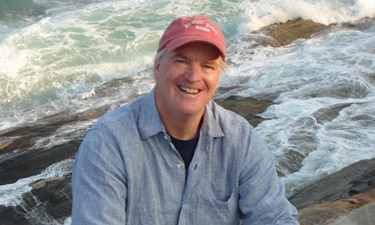 For this magazine to provide you with maximum quality and quantity of content requires starting with substantially more information than we could ever use. After all, that’s what editors do: select and condense so you don’t have to. Like a good Hollywood movie, though, much good stuff ends up on the cutting room floor for lack of available space. That used to be more of a problem than it is now.
For this magazine to provide you with maximum quality and quantity of content requires starting with substantially more information than we could ever use. After all, that’s what editors do: select and condense so you don’t have to. Like a good Hollywood movie, though, much good stuff ends up on the cutting room floor for lack of available space. That used to be more of a problem than it is now.
Take our last page, for example. The outdoor recreation industry factoids are fine and good as they are, all interesting and instructive. But by using the provided web links in the print, digital, and web editions of the magazine, you can access the original resources behind these statistics. Each data point can be an entryway into an entirely new world on any given subject. Many other articles in this and past issues of the magazine provide the same opportunities for accessing more on any given subject. Additionally, the bios of most authors in the magazine now have their email addresses should you need even more information or guidance to better understand their articles.
Our cover story this month delves into the origins and uses for such information. Universities, vendors, governments, associations, and private consultants all generate myriad research. Some of it costs, but much of it is free to the public. Mainly, though, there’s more research available to parks and recreation than most people appreciate.
Author Andrea Lynn describes an interesting phenomenon in parks and recreation research: Only a small portion of the information generated by all these sources ever makes it beyond a small circle of users. It’s an opportunity not lost on the experts Lynn interviewed for the story. It’s also a common lament expressed by the eight up-and-coming researchers profiled in a companion article to the main cover story. As Jason Bocarro of North Carolina State University says, “Researchers are recognizing (or at least they should be!) the need to better translate their research to wider audiences. The translation/dissemination piece of research will be an increasingly critical part of the research process in the future.”
At NRPA, we’re proud of a three-year-old initiative that accomplishes this very thing. Check out the special supplement that provides a summary overview of the latest results from PRORAGIS—your online comparative database of parks and recreation operating and GIS trends. With three years of data, NRPA’s research department has been able to articulate trends in the field that are sure to help you in your work. We’ll leave you with one thought and ongoing request—PRORAGIS is only as good as the participation it receives from agencies. The greater the participation, the better the results.
Information, Please
January 1, 2013, Department, by Phil Hayward

